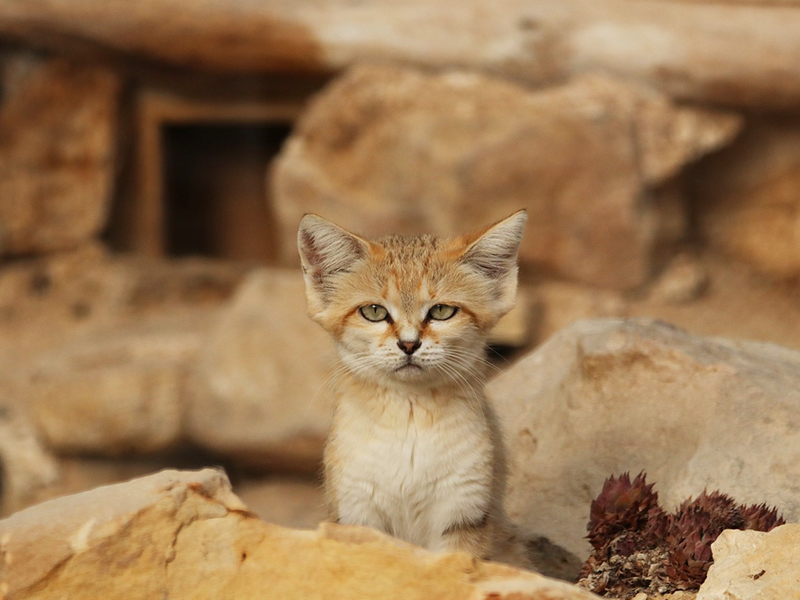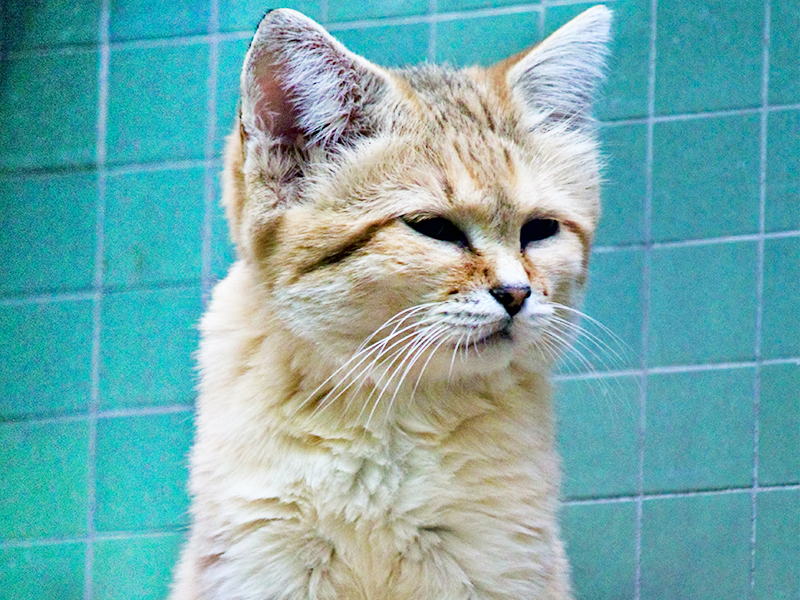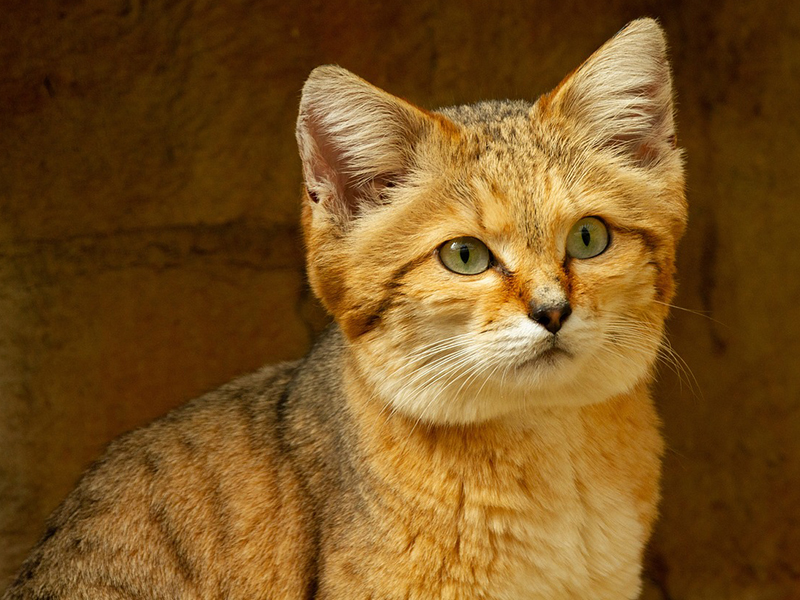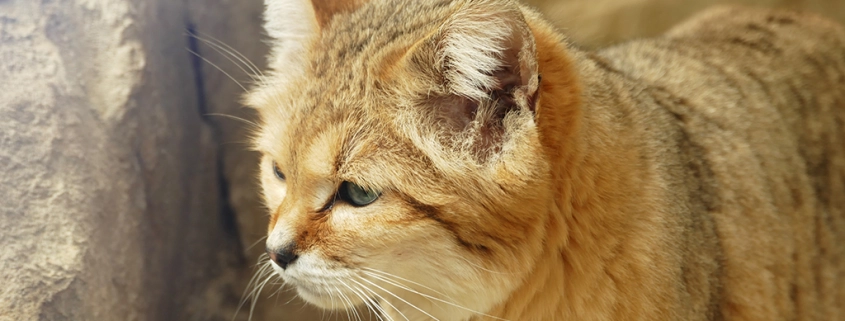Sand Cat: Location, Size, Lifespan, Habitat, Diet
Seeing cats in urban areas, as domestic pets in homes, and even wilder species in forests and mountains is considered a common occurrence. However, among all cats, one species lives in the driest and hottest deserts in the world. This animal, known as the Sand Cat, is one of the rarest of its kind.
The Sand Cat is more similar to African Sand Cats, and there is a belief that these animals are ancestors of modern domestic cats. In the following article, more information about the Sand Cat has been gathered, making it a fascinating and interesting subject. So, join us until the end of the article to get more interesting insights.
Sand Cat Habitat
Before searching for the countries and regions where Sand Cats are found, it is better to highlight the environments in which these predatory animals grow. Generally, Sand Cats inhabit deserts, dry landscapes, and areas with minimal vegetation cover.
They are often found in dry and hot plains and rocky valleys, where daytime temperatures can rise to 51 degrees Celsius (124 degrees Fahrenheit) and drop below freezing at night, making living conditions inhospitable for most mammals.
Sand Cats mainly live in three regions of the world, namely:
1. From the expanse of the Maghreb region, including Algeria, Niger, and Morocco, to the Sahara Desert.
2. In the Arabian Peninsula.
3. Parts of Central Asia, including countries such as Iran, Afghanistan, and Turkmenistan.
Sand Cat Location in Iran
This cat is found in several protected areas across Iran, including the Lut Desert National Park in the southern regions of the Lut Desert in Kerman Province, the Samsoor Plain in the Iranshahr County, the Doshakh Range in the Turan Protected Area in Semnan Province, the Bakhtegan Wildlife Refuge, the Bahram Gur Protected Area, and the hunting-prohibited region of Dahan-e Bagh-e Bavanat in Fars Province.

It also lives in the western part of the Abbasabad Wildlife Refuge and the Motteh Protected Area in Isfahan. Also, sightings of this cat have been reported in the Turkmen Sahra plain and northern regions of Khorasan Razavi.
Sand Cat Size
The Sand Cat, with the scientific name Felis margarita, is the only known species within the genus of sand cats that permanently resides in deserts and arid regions. In terms of body size, sand cats are slightly larger than domestic cats, and their weight is between 1.5 to 4.6 kilograms and a body length of 39 to 52 centimeters.
The color of sand cats is a brownish gray (pale), and this color spectrum becomes lighter as you get closer to the cat’s belly. Other distinctive physical features include small feet and paws, large eyes, black or bold stripes often on the feet, and relatively large and fluffy ears compared to normal cats.
How Rare Is a Sand Cat?
According to the International Union for Conservation of Nature (IUCN), it can be said that these small cats are currently at the lowest risk of extinction. Currently, the population of Sand Cats amounts to around 27,000 individuals. However, this does not guarantee the absolute sustainability of their existence in the long term.
Thanks to instinctive characteristics such as digging burrows and staying out of sight, a nocturnal lifestyle, and adaptability to desert environments, these mammals have established a suitable coexistence with the natural world. However, two significant threats endanger their lives.
Foremost among these are human-induced factors such as hunting and environmental destruction, and secondly, Sand Cats are subject to injury and poisoning by animals like snakes and scorpions.
As a result, Sand Cats are considered a rare species within their genus, and their trade and domestication are not common. In a 2018 auction of sandcats, their prices started at $7,000, making them one of the most expensive felids in the world in terms of value.
Sand Cat Diet
Sand Cats are carnivores. These animals mainly hunt at night and use the primary method of digging and ambushing. Their exceptional sense of hearing enables them to easily identify the position of their prey. Their main food source is desert rodents, primarily comprising three species. Among other animals hunted by Sand Cats are gerbils and birds.

It is worth mentioning that Sand Cats also hunt snakes. They deliver a fatal blow to the snake’s head and then drag it down with a quick movement. Interestingly, Sand Cats bury larger prey among the shifting sands, returning to them later for consumption.
Sand Cat Facts
The Sand Cat is a nocturnal and solitary species that leads an individualistic lifestyle. Unlike other cats, this beautiful feline is remarkably calm and quiet; however, if you hear their sounds, you will be surprised.
Since Sand Cats do not tend to live in groups, during mating seasons, they produce sounds that resemble a combination of a dog’s bark and a cat’s meow, making a very loud and distinctive sound.
The gestation period for Sand Cats lasts approximately 59 to 67 days, and a mother cat can give birth to 1 to 8 kittens in each reproductive cycle, with the most common being a litter of 2 kittens. The weight of the kittens at birth is 39 grams, and they become independent after 8 months. They reach sexual maturity around 14 months of age.
Can Sand Cat be a Pet?
While the sand cat might seem cute and exotic, it is not suitable as a pet for most people. Sand Cats are wild animals with specific needs and behaviors adapted to their natural desert habitat. Keeping them as pets requires expertise in handling wild animals, and in many places, it may be illegal to own them without proper permits.
Additionally, their nocturnal and solitary nature, along with their specialized diet and unique environmental requirements, makes them challenging to care for in a domestic setting. Conservation efforts and protection of their natural habitat are crucial for the well-being of sand cats, and they are better suited to growing up in the wild rather than as pets.
What Is Special About Sand Cats?
Sand Cats can survive for long periods without drinking water, which is a remarkable adaptation to their desert habitat. While all members of the cat family have strong hearing, sand cats stand out with even stronger hearing senses compared to other feline species. They have a special interest in hunting poisonous snakes.
The main prey for these unique felines includes venomous snakes, canids like foxes, and large birds. Where water is not readily available, sand cats obtain the required moisture from the prey they consume. This distinct ability to thrive in dry conditions and their specialized hunting preferences make sand cats truly exceptional members of the feline family.
Are Sand Cats Dangerous?
Sand Cats, while wild and with natural hunting instincts, are not generally considered dangerous to humans. These small wild cats are elusive and tend to avoid human contact. They are more likely to retreat and hide rather than confront people.

However, it is important to note that they are wild animals, and if feel threatened, they can react defensively. If encountered in the wild, it is best to observe them from a distance and not attempt to approach or interact with them.
Sand Cat Lifespan
The lifespan of sand cats in the wild is relatively short, usually between 7 and 10 years. Various factors, including environmental conditions, availability of prey, and natural predators can affect their lifespan.
Sand Cats in captivity, where they are protected from many of the challenges they face in the wild, may live longer, with some reaching 13 years or more under the right care and conditions.
Final Word
With its unique adaptation to desert life, the sand cat is a remarkable and mysterious member of the feline family. Thriving in the harsh conditions of arid landscapes, these small wild cats display extraordinary characteristics, from their nocturnal hunting habits and acute sense of hearing to their ability to survive long periods without water.
As we marvel at the unique characteristics of sand cats, let us also understand the need to ensure their continued survival in the ever-changing desert landscapes of our planet.
Are you planning to travel to Iran and looking for an Iran resort? Consider Matinabad Eco-resort.





Leave a Reply
Want to join the discussion?Feel free to contribute!